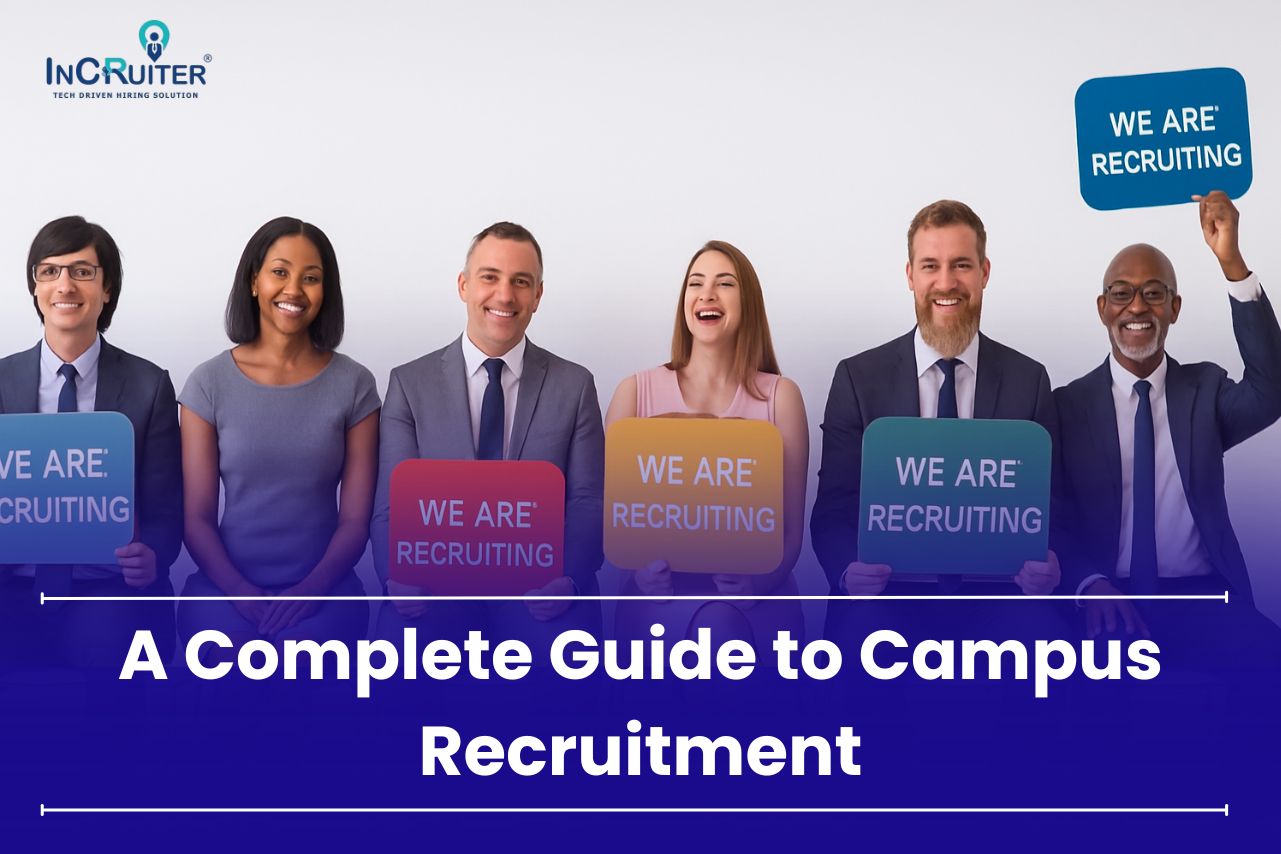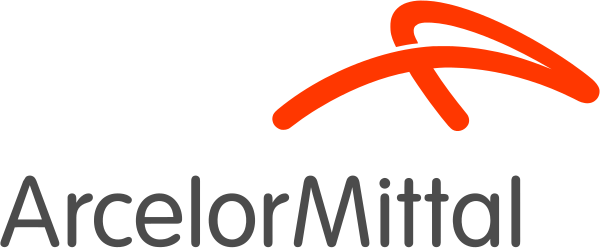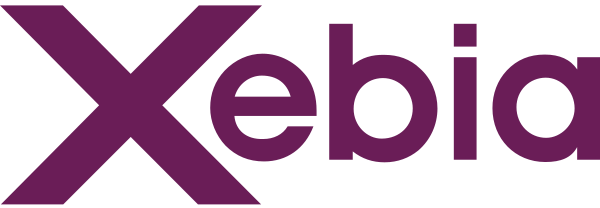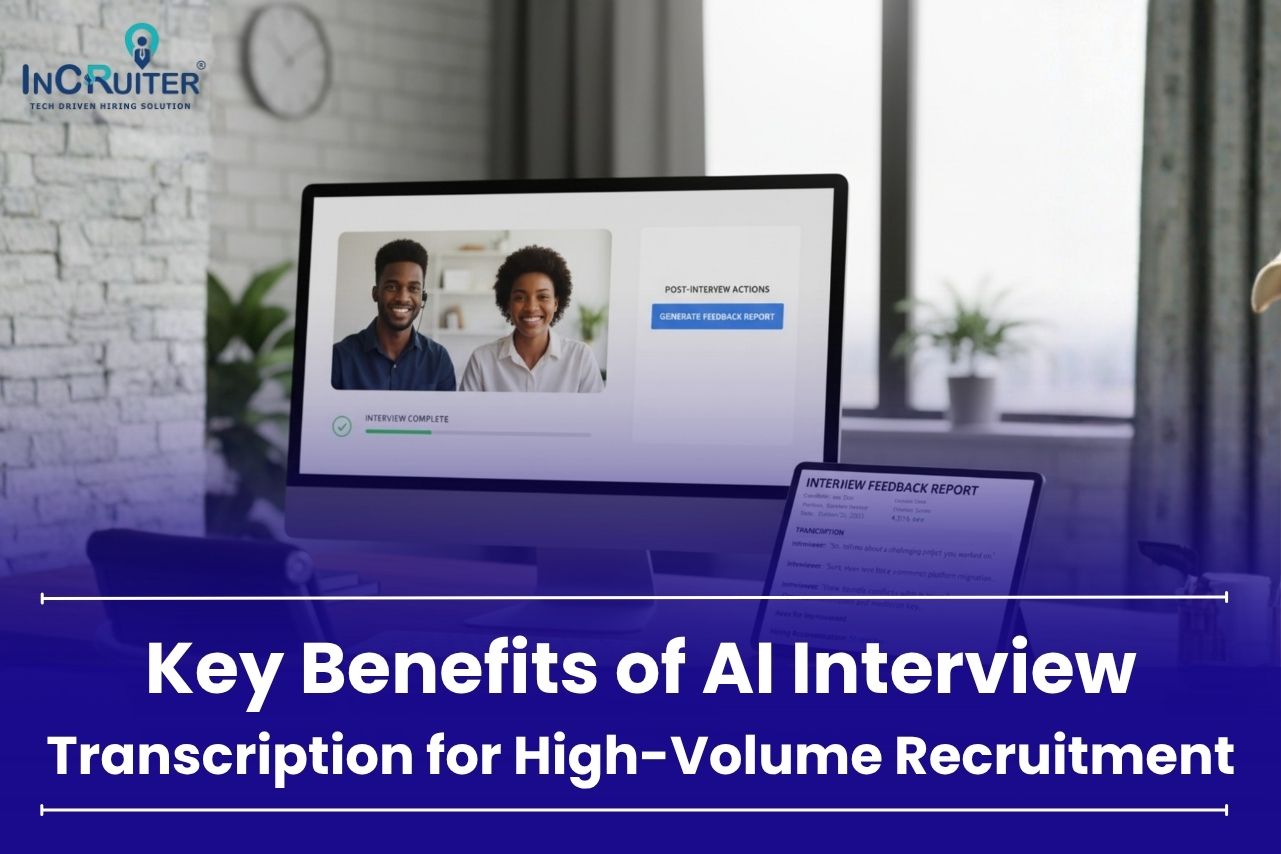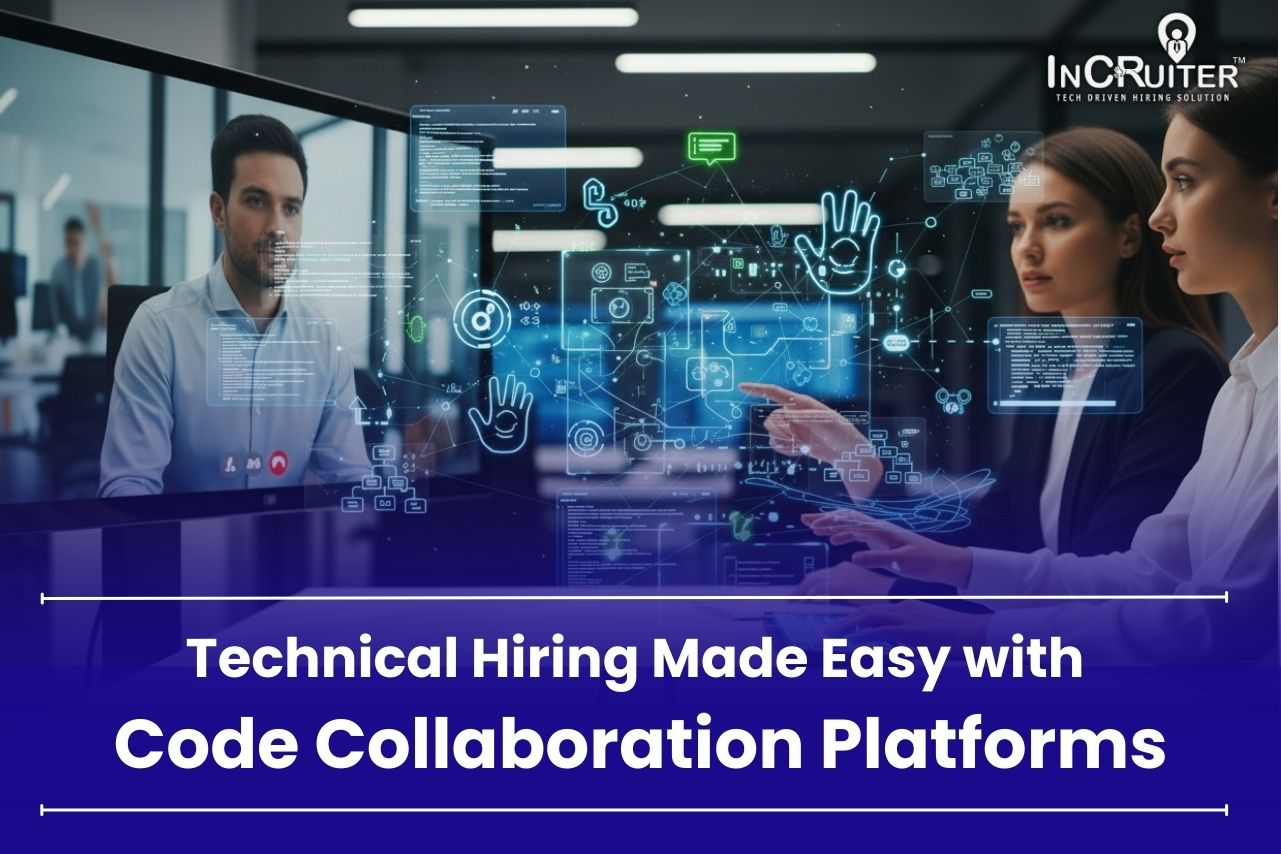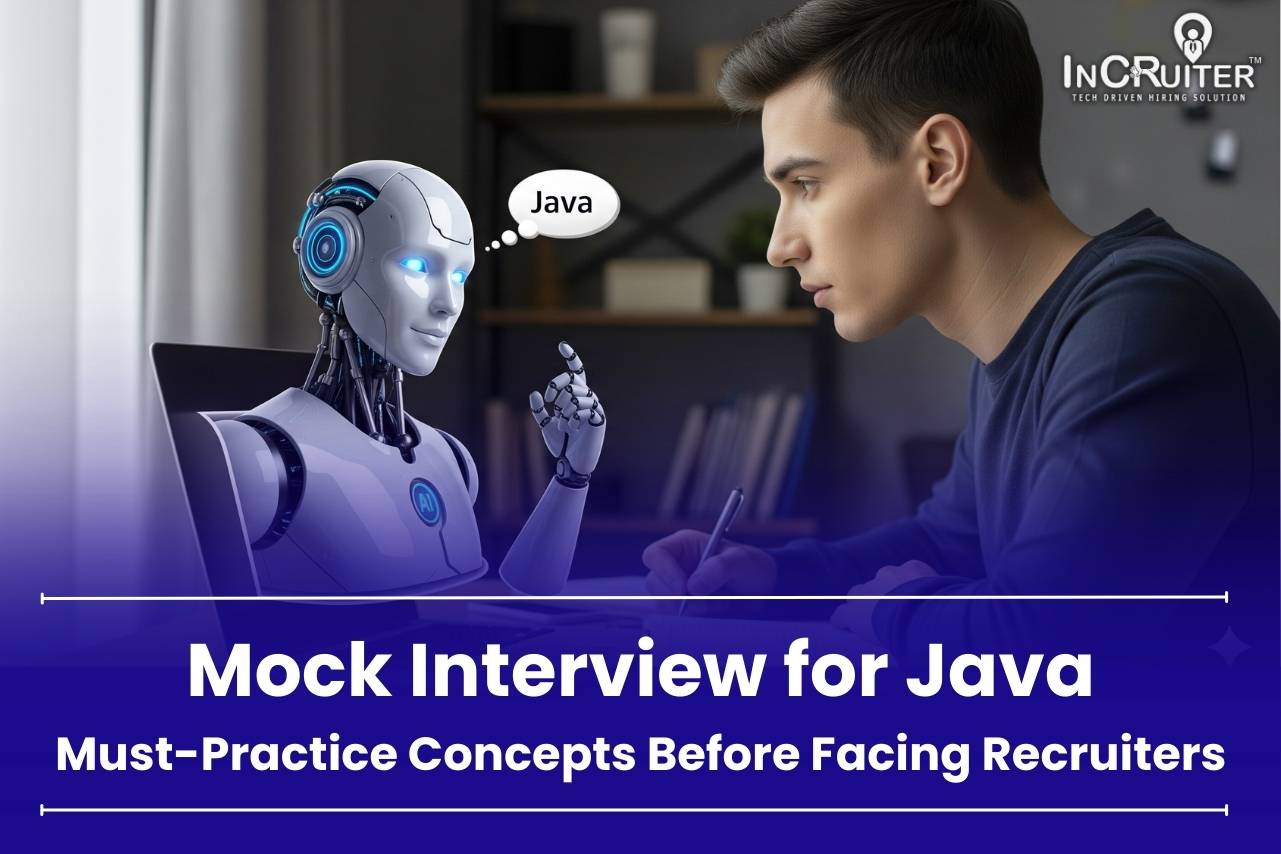Freshers are no longer just job seekers; they are tomorrow’s leaders, innovators, and problem solvers. In 2025, more than seventy percent of companies are actively targeting fresh talent, but only a few are getting it right. Without a strong Campus Recruitment strategy, companies lose valuable candidates to faster competitors, face longer hiring cycles, higher offer dropouts, and weaker cultural fit. Today, winning the best young minds requires more than just campus visits; it necessitates thoughtful planning, intense engagement, and the effective use of technology.
In this blog, you will learn how to build a modern campus hiring strategy, avoid common mistakes, track key metrics, and use innovative tools for faster, better, fresher hiring.
Why Campus Hiring is Critical for Future-Ready Organizations?
1. Fresh Perspectives and Innovation
Hiring freshers from colleges brings a lot of fresh thinking into a company. They know about the latest tools, methods, and case studies taught in classrooms. Their knowledge is new and sharp. A report by LinkedIn reveals that over 40% of employers prioritize creativity when hiring young people. Fresh minds can help companies handle new trends, tech changes, and growing customer needs much faster. Young workers are often full of ideas that older ways of working might miss.
2. Early Leadership Pipeline
Getting freshers early helps companies shape future leaders from day one. Research by Harvard Business Review found that companies that promote their own people keep workers longer and make 30% more money. When new graduates join, they grow with the company’s way of working. They easily fit into mentoring and training programs. Over time, they can move into important roles without much struggle because they have been part of the system from the start.
3. Faster Learning and Adaptability
Freshers are quick to learn and ready to accept changes. They adjust faster compared to people who have worked elsewhere for many years. A NACE study found that new graduates are 50% more ready to join training programs in their first year. Since they have fewer fixed work habits, they are easy to train across new tools, different work styles, and updated systems. This makes them a wise choice for companies that change and grow fast.
4. Competitive Hiring Advantage
Campus hiring lets companies grab the best people before they even step onto public job boards. Gartner’s research shows that meeting students during college years raises offer acceptance by 32%. When companies run internships, events, or career talks, they build strong early bonds with students. These students then prefer joining the brand they already know rather than waiting for random offers. Early contact means better hiring before others get a chance.
5. Smart Way to Save Costs
Hiring freshers costs less than hiring people who already have work experience. According to Glassdoor, starting salaries for freshers are around 30% lower compared to people with two or three years of work. Also, companies avoid heavy fees charged by agencies and headhunters. Training programs for freshers can be made in a way that fits everyone, which keeps the cost steady. Companies that focus on campus hiring often report lower hiring costs over time compared to others.
6. Higher Loyalty and Retention Rates
Freshers who begin their career with a company often stay for more years than those hired laterally. SHRM’s research shows that people hired straight out of college have an 18% higher chance of staying for at least five years. Starting from the beginning helps them feel part of the company’s way of working. Their first big successes happen inside the company, so they feel proud and connected. This loyalty helps companies avoid the high cost of frequent hiring.
7. Employer Branding Opportunity
Going to campuses gives companies a great chance to show themselves as great places to work. TalentLyft found that 75% of candidates check an employer’s image before applying. By running workshops, joining career fairs, sharing success stories, and sponsoring events, companies show students they care about young talent. This way, when students finish college, they already know and like these companies, leading to better applications.
8. Alignment with Diversity and Inclusion Goals
College campuses have students from many different parts of life, different cities, cultures, and families. A McKinsey report found that companies with a wider mix of people make 36% more profits than others. Targeting colleges with different kinds of students helps companies have teams full of fresh thoughts and better ideas. Hiring from a wider group also builds fairer workplaces where everyone feels welcome and valued.
9. Adaptation to Skills-First Hiring Trends
Campus hiring is not only about which college someone went to. Many companies now focus on real skills like coding, teamwork, data work, marketing tools, and leadership ability. According to the World Economic Forum, half of the companies will move toward skill-based hiring by 2025. Checking real skills through tests, challenges, and projects helps find better people than just looking at grades or college names. Skills tell more about what someone can actually do.
10. Future-Proofing the Workforce
Hiring from campuses builds strong teams ready for future work needs. A study by Deloitte says companies that invest in young workers are 20% faster when facing market changes. Freshers learn fast about new areas like machine learning, cloud work, and cybersecurity. Having people ready for future tech keeps companies steady when things outside change. Preparing teams today means fewer surprises tomorrow when new tools and ways of working come into play.
Also Read: Lateral Hiring Meaning
The End-to-End Modern Campus Hiring Process
Campus hiring today differs significantly from what it was a few years ago. Running manual drives, endless spreadsheets, and dozens of calls slow down companies and confuse students. A comprehensive and intelligent system is necessary to manage everything from start to finish, while maintaining the human touch.
Here’s a practical guide to how a whole campus hiring process should work in the modern world:
Step 1: Platform Setup
The first step is to establish a robust Virtual Campus Hiring Platform. A solution like InCruiter helps companies manage the entire process from outreach to offer letters in one place. It manages college connections, student registrations, assessments, interviews, and final rollouts without requiring separate tools for each step. Having everything connected makes life easier for both your team and the students.
Step 2: Resume Screening
After students complete their registration, the next step is to review their resumes quickly but carefully. Manually checking hundreds of resumes often leads to delays and missing good candidates. Utilizing an AI-based JD-to-CV matching system streamlines this step, making it faster and more equitable.
The platform checks if a student’s skills, education, and projects match the job role requirements you set. Instead of just reading resumes one by one, recruiters can now see a ready list of top matches based on real job needs. This not only saves a huge amount of time but also helps in shortlisting students who are truly fit for the role, not just those who are skilled at making their resumes look impressive.
Step 3: Candidate Assessments
After shortlisting, move students to real skill checks. AI-driven coding tests, aptitude quizzes, and project simulators through an AI assessment platform give a clear picture of who is ready for the role. It is essential to focus on what students can do, rather than just what they write on paper. The proper assessment also makes students feel the process is fair and based on merit.
Step 4: Slot Booking & Engagement
Once assessments are completed, students can easily book their interview slots. An Automated interview scheduling system allows students to pick slots based on their comfort and availability. Sending timely invites and reminders keeps students engaged and reduces no-shows. Quick two-way communication at this stage helps maintain high energy and fosters a positive attitude toward the company.
Step 5: Structured Interviews
When the interview time comes, conduct structured video interviews using specialized video interview software. Having real-time feedback options and interview recordings helps hiring managers review candidates better. It also eliminates the confusion that arises when multiple people interview the same student without taking notes. Structured interviews also ensure that every candidate receives a fair and equal opportunity to perform.
Step 6: Offer Rollouts
Once interviews are complete, move fast on offer rollouts. Students dislike waiting for weeks after completing rounds. A good platform helps generate offer letters quickly and facilitates easy digital acceptance management. Instant rollouts show seriousness and keep good candidates excited to join.
Step 7: Virtual Pre-Boarding
The work does not stop after sending offer letters. Selected students often get multiple offers, so companies need to keep them connected until their joining day. Virtual pre-boarding activities, such as small online meetups, project discussions, buddy programs, and quick welcome kits, help build strong bonds and reduce the risk of last-minute dropouts.
Understanding Today’s Talent: Engaging Gen Z and Gen Alpha
Digital Presence Mixed with Real Connections
For Gen Z and Gen Alpha, the first meeting with a company mostly happens online. They scroll through LinkedIn posts, check Instagram reels, read Glassdoor comments, and even watch TikTok clips if the company has them. While they are good with technology, they still look for real people behind the screen. Simple things like true employee stories, friendly virtual chats, and fun live sessions help them feel close. If your company looks too stiff or acts like a robot online, they lose interest faster than you think.
Showing Values Through Real Actions
Young people today are not impressed by fancy mission lines or big promises. They want to see if your company really stands for what it says. If you talk about supporting all types of people, they will check who is sitting in top jobs. If you say you care about mental health, they will listen to what your team members say. Gen Z and Alpha trust companies that are open about both their wins and their struggles. It is not about being perfect. It is about being true and steady every day.
Need for Flexibility and Balance
They do not dream about sitting in an office from morning till evening. They think about having choices and keeping balance in their lives. Freedom to plan their work hours, work from home, or mix both matters a lot. They also value time for rest, family, hobbies, and health. Companies that expect people to stick to old work rules without caring about personal space often miss out on these bright young minds. Today, flexibility is not seen as a bonus; it is simply something they need.
Quick Replies Build Trust
When a company takes many weeks to reply after an interview, young candidates feel ignored. They are used to getting fast replies on Instagram, live gaming chats, and daily news alerts. They expect companies to be just as quick. Even a short email like “We are still checking” makes a big difference. When companies answer fast and speak honestly, they build strong trust. This trust leads to more job offers being accepted and better name recall among the younger crowd.
Skills Matter More Than Degrees
Many Gen Z and Alpha folks learn real-world skills outside of college. They pick up coding on YouTube, graphic design through free tools, marketing from quick online classes, and leadership from group activities. They believe what you can do matters more than where you studied or what marks you scored. During campus hiring, companies that only care about degrees miss some of the best people. Giving skill-based tests, asking for project work, or running live tasks shows that you truly care about ability, not just papers.
Career Growth Without Losing Themselves
Gen Z and Alpha are full of dreams, but they refuse to lose who they are just to move ahead. They look for jobs where they can learn, test new ideas, and still stick to their own values. They like places where leaders are easy to talk to, where they can grow by trying, not just by following orders. Companies that push old rules, strict ladders, and no space for new thinking scare them off. They are ready to give their best, but only where they feel they are respected and seen for who they really are.
Building a Winning Campus Recruitment Strategy
Finding the right fresher talent from campuses is not as simple as just showing up and handing out job offers. Companies that treat it like a one-day task usually end up with wrong hires or poor retention. Building a strong and smart campus hiring plan needs clear goals, steady presence, and the right tools to make the process smooth for both sides. Let’s walk through the real steps that make a difference.
1. Define Your Hiring Goals
Before doing anything, get clear about your hiring needs. Are you just filling quick openings where you need fresh energy? Or are you trying to build a long-term bench of future leaders?
It is also important to decide what type of roles you need freshers for. Some companies need coders or designers who can get productive quickly. Others are looking for general smart minds who can be trained later.
Using an AI-powered assessment platform at this early stage helps you match students to real role requirements based on skills, not just on what their resumes say. It makes early shortlisting much faster and far more accurate.
Pro Tip: Always have two lists ready: “Urgent Need” and “Future Potential.” This helps balance the short-term hiring rush and long-term team growth.
2. Select Target Institutions Intelligently
Many companies chase only top-tier colleges without realizing that hidden gems often come from smaller cities. Look at past hiring data, which colleges gave you great performers before? Check the quality of programs offered and talk to alumni if possible.
Also, if you care about having a mix of backgrounds in your teams, pick campuses that match your diversity goals. It’s smart to add tier-2 and tier-3 colleges to your plan where you find hardworking, loyal talent who may not have many other big offers yet.
Managing a wide range of colleges without messing up schedules is tough. An interview scheduling platform helps you stay organized, send invites in one click, and avoid last-minute panic.
Pro Tip: During first campus visits, always ask professors about hidden stars you’ll often find amazing students who do not shine on paper but shine in real work.
3. Craft a Year-Round Engagement Plan
If students only hear about you once a year during placement season, they forget you quickly. Good hiring starts long before final interviews.
Plan real learning engagements, internships where students actually work on projects, coding hackathons where they solve real problems, webinars where industry leaders speak plainly, and friendly contests that make your brand familiar and fun.
Big brands like Spotify created hackathons to spot future employees early. You can too. Using a pair programming platform allows students to work together on real coding tasks, providing you with a clear view of how they think, build, and solve problems.
Pro Tip: Students remember companies that gave them something valuable, learning, mentorship, or even small wins, much more than companies that just showed up with flashy slides.
4. Build Relationships with Campus Stakeholders
It is a big mistake to think campus hiring is only about impressing students. In real life, Training and Placement Officers (TPOs), professors, and student group leaders often play a major role in shaping how students see a company.
Start reaching out early. Send simple, clear emails to TPOs explaining your hiring needs, your process, and what you hope to offer students. Always thank them for their support because they handle many tasks and companies every season. Showing respect for their time and work builds trust that lasts beyond one hiring cycle.
Some professional platforms, like InCruiter, now offer full end-to-end campus hiring support, from helping you connect with colleges and planning drives, to arranging tests and running interviews smoothly. Companies using such support find it easier to stay focused on selecting the best candidates without getting stuck in the background work.
Pro Tip: If possible, visit the campus outside of placement season too. Running a small workshop, a guest talk, or an interactive event builds stronger bonds than any email.
5. Create a Strong Employer Brand Presence
Students today do not wait for companies to tell them about jobs. They research companies online before applying. Your brand image must be ready before the hiring season starts.
Make your career page mobile-friendly because most students browse on phones. Fill it with short, real videos showing your work life, not just boring policy text. Feature young employees sharing their honest stories.
Launch student ambassador programs where college students act as your voice inside their campus. Build referral drives where current interns bring their friends. Run small social media campaigns with real faces, fun office moments, and tips from your team members.
Pro Tip: “Real is better than Perfect.” Students spot fake marketing fast. Honest glimpses into daily work life create stronger connections than any shiny ad.
Technology’s Role: Smarter, Faster, More Accurate Hiring
Campus hiring today has undergone a complete transformation with the effective use of the right technology. Companies that still rely solely on manual processes often lose top talent to faster and more efficient competitors. Technology now plays a significant role in making the hiring process quicker, fairer, and easier to manage.
Here’s how modern tools support every stage of campus recruitment:
Virtual Campus Recruitment Platforms
Instead of visiting dozens of campuses in person or managing information through spreadsheets, many companies now utilize Virtual Campus Hiring Platforms, such as InCruiter, to help manage the entire hiring cycle from connecting with colleges to rolling out offers, all in one place. This keeps the hiring process neat, fast, and student-friendly.
AI Proctoring and Skill Assessments
Checking skills at scale can be tough. AI proctoring tools now help monitor candidates during coding tests, aptitude exams, and technical quizzes. This ensures fairness and reduces any unfair practices. Automated assessments not only save recruiters time but also give deeper insights into how a student thinks and solves problems, not just what they memorize.
CRM for Candidate Relationship Building
Keeping students warm from the first interaction till joining day is critical. CRM (Candidate Relationship Management) tools help maintain constant contact with candidates through emails, reminders, updates, and small check-ins. It makes students feel valued and reduces the risk of them being lured away by other offers.
Mobile-First Application Processes
Most freshers today browse and apply for jobs directly through their phones. A mobile-first application flow ensures that registration, test-taking, and interview scheduling are all easy and smooth on small screens. Complicated websites that only work well on laptops lead to many dropouts.
Gamification in Recruitment
Students love challenges. Adding gamified elements, such as quizzes, coding games, leaderboards, and rewards, keeps students more engaged and excited. Companies that make their hiring process slightly fun usually see better engagement and more genuine effort from students.
Innovative Tools That Make a Real Difference
Today, having the right set of hiring tools is not just a support; it is a necessity to manage campus drives smoothly and fairly. Each tool plays a clear role in making hiring faster, better, and more organized. Here’s a closer look at the solutions available:
| Platform | How It Supports Campus Hiring |
| Interview as a Service | Access a vast pool of freelance interviewers across 250+ specialized domains. Helps companies assess fundamental candidate skills beyond resumes through expert-driven interviews. |
| AI Assessment Platform | Evaluate students’ coding abilities, aptitude skills, and technical knowledge early in the process to filter the right talent before interviews begin. |
| AI-Powered Coding Assessment Platform | Conduct coding challenges, problem-solving exercises, and hands-on technical tests to check real-world coding skills with instant analysis. |
| Interview Scheduling Software | Make it easy to coordinate interviews with students by automating slot booking, sending reminders, and keeping both recruiters and candidates informed. |
| Video Interview Platform | Host structured video interviews where recruiters can assess communication, thinking style, and technical fit, with real-time feedback and recording options. |
| Pair Programming Platform | Run live coding sessions where students solve real-world problems while interviewers observe how they plan, code, and debug, making them perfect for technical roles. |
| Applicant Tracking System (ATS) | Give your team centralized access to all candidate data from resume submission to offer rollouts, making the entire campus hiring drive well-organized and easy to manage. |
How to Measure Campus Hiring Success?
Running a good campus hiring drive is only half the job. Knowing how well it worked is just as important. Without tracking the correct numbers, it becomes difficult to determine what to repeat, what to correct, and where to improve next time.
Here are the most critical metrics every company should observe after campus drives:
Cost per Hire
This shows how much you spent to hire each student. Tracking cost per hire helps you know if your hiring process is efficient or if you are paying too much for too few results. Keeping this number in control is crucial for running future drives efficiently without wasting resources.
Time to Hire
This measures the time elapsed from the first student interaction to the issuance of the final offer letter. In campus hiring, speed is crucial because top students often receive multiple offers. A shorter time to hire indicates that your team is organized and serious, which enhances your chances of attracting the best candidates.
Offer Acceptance Rate
This number indicates the percentage of students who received offers and ultimately accepted them. A high acceptance rate typically indicates that students enjoyed their experience with your company and found your offers appealing. A low rate signals problems either in the offer terms or in how the candidates felt during the process.
Retention Rate of Freshers
Hiring is not successful if students leave within a few months. Tracking how many freshers stay beyond the first year shows if you hired the right cultural fit. It also helps prove that your campus hiring is giving real long-term value, not just short-term numbers.
Diversity Metrics
Examining diversity numbers indicates whether your hiring drive has reached a diverse group of students from various backgrounds, colleges, cities, and demographics. A good mix not only builds stronger teams but also unlocks better ideas, skills, and fosters long-term company growth.
Candidate Engagement
The level of involvement and enthusiasm that candidates display during the process reflects the strength of your employer brand. Good engagement leads to better offer acceptances, positive word-of-mouth inside campuses, and easier future hiring rounds.
Sample KPI tracking table
Tracking the right metrics after a campus hiring drive tells you where you are winning and where you need to improve. While every company and industry may have different benchmarks, here’s a good starting point for what strong campus hiring numbers usually look like:
| KPI | Healthy Success Range | What It Means |
| Cost per Hire | Target reduction of 10%-20% year-on-year | Shows your hiring process is becoming more efficient over time. |
| Time to Hire | 2 to 3 weeks (maximum) | Short timelines keep you ahead of competing offers. |
| Offer Acceptance Rate | 80% or higher | Strong brand image and positive candidate experience. |
| Retention Rate of Freshers (1 Year) | 75%-85% | Freshers are happy, engaged, and fitting into your company culture. |
| Diversity Hiring | 30%-40% of candidates from varied backgrounds | You are building wider, smarter, and more creative teams. |
| Candidate Engagement | 70%-80% active participation across hiring stages | Students stayed interested and involved till the end. |
Common Campus Hiring Mistakes (and How to Avoid Them)
Campus hiring looks simple from the outside, but in real life, many companies lose good candidates because of small mistakes. Students today expect better experiences, real communication, and faster processes. If companies ignore these changes, they struggle to attract or keep the best freshers. Let us walk through some of the most common mistakes that happen during campus hiring and simple ways to avoid them before they cause bigger problems.
Poor Preparation
Starting campus hiring without proper preparation causes confusion at every step. Many companies wait till the last moment and then try to rush everything from role definition to interview panels. Students notice the lack of structure very quickly. Planning ahead with clear hiring goals, job descriptions, assessment plans, and timelines is important. Preparation also includes keeping your teams ready for interviews and feedback. A well-prepared hiring plan not only saves time but also improves the experience for both students and recruiters.
Weak Employer Branding
Students today do not just look for jobs. They look for places where they can see growth, learning, and respect. If a company shows only formal career pages or boring presentations, it fails to connect. Students love real stories, real employee journeys, and fresh content on social platforms. Sharing small moments, real projects, and employee experiences creates a brand that feels alive. A strong brand presence also means students remember your company when they start choosing between offers later.
No Post Offer Engagement
After giving an offer, many companies go silent thinking their work is done. But students who feel forgotten often start looking for better options. Keeping them engaged after the offer shows that the company really values them. Sending small updates, arranging casual online meetings, or even sharing joining preparation tips keeps the bond strong. Post offer engagement also reduces offer dropouts because students feel included and excited about joining. It is about simple genuine communication, not about pushing information every week.
Ignoring Technology Tools
Managing hundreds of applications, assessments, and interviews manually leads to mistakes and delays. Students expect quick replies, clear schedules, and simple communication. Companies that still manage through emails and spreadsheets look outdated. Using smart hiring platforms for assessments, interviews, and feedback collection makes the process faster and cleaner. It helps recruiters focus on real selection instead of chasing documents and schedules. Good technology makes hiring smoother for students and recruiters without making the process feel mechanical.
Over Focus on GPA Over Skills
Many companies still judge freshers mainly by their academic scores. But marks do not always tell the full story. Some brilliant coders, designers, and marketers may not have top GPAs but show great skills in practical work. When hiring only focuses on GPA, companies miss out on passionate learners and problem solvers. Adding skill assessments, coding tests, design tasks, or project presentations gives a real picture of a student’s abilities. Skills based hiring creates stronger fresher batches who perform better on the job.
Missing Early Engagement
Waiting till final year placements to meet students is a mistake many companies regret later. Students usually start forming opinions about brands during internships, workshops, and online events much earlier. Companies that build early connections through learning programs, hackathons, contests, or mentorship sessions stay in students’ minds when placement time comes. Early engagement is about being part of their growth journey, not about selling jobs too soon. A familiar name feels safer and more trustworthy when it is time to accept offers.
Real-World Success Stories
InCruiter’s end-to-end campus hiring solution has helped companies connect with talent across more than 100 campuses globally. From setting up early student engagement programs to conducting AI-driven assessments, scheduling interviews, and managing offer rollouts, everything happens through one simple platform. Companies using the solution have seen faster hiring cycles, higher offer acceptance rates, and better fresher retention.
In recognition of its innovation and impact in the HR technology space, InCruiter was awarded the Best HR Tech Platform 2025 by Business Connect Magazine. This achievement reflects InCruiter’s commitment to building smarter, technology-driven recruitment experiences. By combining powerful automation with a real understanding of campus needs, InCruiter has made it easier for companies to hire the right students without the usual delays and confusion.
The Future of Campus Hiring: What’s Next?
Campus hiring is moving toward smarter, faster, and more skills-based systems. Companies will rely more on AI-powered assessments, live coding challenges, and virtual interviews to find real talent early. Early engagement through webinars, online contests, and internships will become even more important. Mobile-first application flows and real-time feedback will shape student experiences. Instead of focusing only on degrees, companies will look deeper at skills, creativity, and learning ability. The future belongs to companies that stay human while using smarter tools.
Conclusion
Campus hiring is not about filling entry-level roles quickly. It is about planting seeds for future leadership. Companies that invest in students early build teams that grow stronger over time. Moving from last-minute hiring to a thoughtful, year-round campus engagement plan is no longer optional. It is the smartest way to stay ahead. When you invest in campus recruitment smartly today, you build tomorrow’s leadership from within.
Ready to make your hiring future-proof? Book a demo with InCruiter and start building your next generation of leaders.






